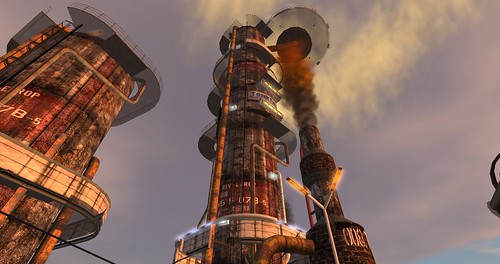環團按鈴上告美國聯邦上訴法院,指出煉油廠空氣汙染標準已經超過10年沒有更新後,美國環保署(EPA)於15日提案修改煉油廠空氣汙染標準,以維護煉油廠附近居民權益。
EPA此次提案首次強制要求監控煉油廠圍欄周邊空氣苯濃度,確保排放安全。公眾也可自由取得監控數據。
EPA提案要求提高儲存槽的排放控管;為確保廢氣燒盡,亦提高燃燒塔效能標準,此外也要更新延遲焦化裝置的排放標準。EPA說,延遲焦化裝置目前是煉油廠未管制有毒氣體排放源的大宗。
2012年,公益法律事務所「地球正義」和非營利組織「環境正義計畫」,代表德州、加州和路伊斯安那州受影響的居民正式提起訴訟。
原告團體控訴EPA未能依照空氣潔淨法每8年更新煉油廠汙染標準。2014年1月13日,哥倫比亞特區美國上訴法庭下令訂定法規制定時間表。
依照法院命令,EPA必須執行風險和技術審查,以知悉兩類煉油過程可達到的最佳技術層級。法院命令簽署後,EPA針對煉油廠附近居民進行人口分析,研究其社會、人口和經濟特性。EPA發現,受煉油廠排放危害最深的居民中,有一半是弱勢族群,是一般人口群體中的兩倍。
不過煉油廠遊說團體不樂見這個新法規。
美國石油學會法規與科學事務主任Howard Feldman說:「EPA的煉油廠法規花費高昂,但是煉油廠排放量已經低於目前法規,實際環境利益不明。此法規的目的是評估煉油廠排放是否對公眾造成風險、風險多高,但EPA已經下結論,煉油廠排放造成的風險很低,也有足夠的安全距離保護居民。」
全國清淨空氣機構協會(NACAA)支持EPA的新法規。
NACAA執行長Bill Becker15日表示,圍欄周邊空汙的新規範是一大突破:「這是有史以來首次要求煉油廠監控圍欄周邊的有毒汙染層級,並採取必要的減汙措施。典型煉油廠有數百個排放點,其中有許多逸散排放物並非來自特定排煙管。其排放的許多有毒氣體汙染物會致癌,且沒有被妥善控制,是極大的健康和環境威脅,環境正義社區深受其害。公眾有權知道他們呼吸的空氣是否安全。」
To protect neighborhoods located near oil refineries, the U.S. Environmental Protection Agency today proposed to update the air pollution standards for refineries – standards that environmental groups proved in court are more than a decade overdue.
The EPA’s proposal would, for the first time, require monitoring of air concentrations of benzene around the fence line perimeter of refineries to ensure that emissions are controlled. These results would be available to the public.
The proposal would also require upgraded emission controls for storage tanks, performance requirements for flares to ensure that waste gases are properly destroyed, and emissions standards for delayed coking units, which are currently a significant unregulated source of toxic air emissions at refineries, the agency said.
The newly proposed standards come in response to a 2012 lawsuit filed by the public interest law firm Earthjustice and the nonprofit Environmental Integrity Project on behalf of affected community groups in Texas, California and Louisiana.
The groups alleged that while the EPA was required under the Clean Air Act to update refinery pollution standards every eight years, the agency had failed to do so. The suit was resolved in a court ordered consent decree filed January 13, 2014 in the U.S. Court of Appeals for the District of Columbia that set the rulemaking schedule.
The decree commits the EPA to perform risk and technology reviews for maximum achievable control technology in two categories of refinery processes.
After the consent decree was signed, EPA conducted a demographic analysis of individuals living near petroleum refineries for different social, demographic and economic groups. The agency found that about half of the people most at risk from refinery emissions are minorities, roughly twice the percentage of minorities in the general population.
But refinery lobby groups fail to see the new rule in a positive light.
Howard Feldman, API director of regulatory and scientific affairs, said, “EPA’s refinery rule comes with a high price tag but uncertain environmental benefits while emissions continue to fall under existing regulations.”
“This rule is intended to evaluate what risk, if any, is posed to the public from refinery emissions. But EPA has already concluded the risks associated with refinery emissions are low and the public is protected with an ample margin of safety.”
The National Association of Clean Air Agencies supports the EPA’s proposed rule.
NACAA Executive Director Bill Becker said today that the fence line requirements are a big step forward. “For the first time ever, these facilities will be required to monitor the toxic pollution levels at their fence lines and take appropriate steps to reduce emissions, where necessary. This is particularly important in light of the fact that a typical refinery has hundreds of emissions points, many of which are ‘fugitive’ emissions, not emanating from a particular stack.”
“Many of these hazardous air pollutants are cancer-causing and not adequately controlled and present disproportionate health and environmental impacts, especially on environmental justice communities. The public deserves the right to know whether the air they are breathing is safe,” said Becker.
※ 全文及圖片詳見:ENS




